What's Good: Gorgeous 3.7-inch display and Android 2.0.
What's Bad: Battery life is quite poor, and physical keyboard needs improvement.
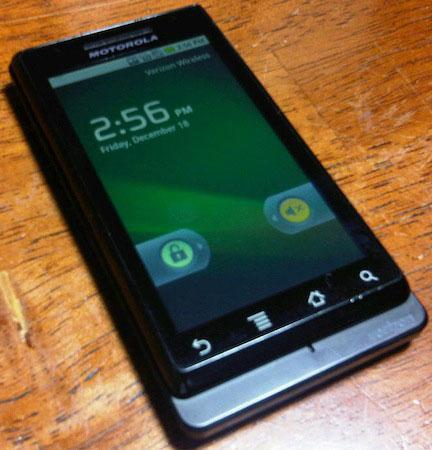
Despite being a die-hard BlackBerry user, the Motorola DROID excites me. With a large screen, Android 2.0, and a durable form factor, it seems to be a good option, and a welcome addition to Verizon's somewhat ho-hum device lineup. Combine that with an expensive marketing campaign on Verizon's behalf, and it seems to be the gadget of the year (actually, it was, according to Time Magazine). The question remains, however: does the DROID live up to its name?
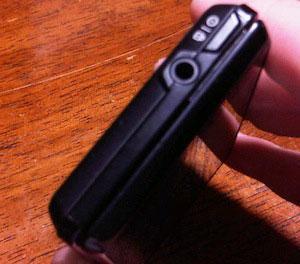
The DROID that I tested came directly from Motorola, so accessories may differ from those offered by Verizon. My DROID came with the device, battery, home charger, USB cable, car charger, and 16 GB microSD card (installed in the phone). Coming in at 4.55 inches long by 2.35 inches wide by 0.55 inch thick, the DROID weighs 5.99 ounces, making it slightly heavier than the average smartphone on today's market. The device is made of metal, and the overall design is something I'm very pleased with. In a world of plastic and cheap smartphones, the DROID stands out. The 3.7-inch LCD display houses 16.7 million colors and 480 x 854 pixels. The screen on the DROID is absolutely breathtaking. From viewing e-mails to looking at pictures, it's a joy to use. The DROID slides up to reveal the full QWERTY keyboard and D-pad, but the hinge doesn't offer any sort of spring-loaded assistance (like the G1, CLIQ, and other Android devices on the market).
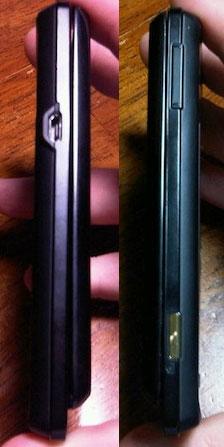
The left side of the device contains the microUSB charging port, while the right side houses the volume rocker and the camera shortcut key. The top contains the power button and the 3.5mm headphone jack, and the 5.0-megapixel camera is housed on the back of the device. The front of the phone contains four touch sensitive buttons: Back, Menu, Home, and Search.
The DROID ships with Android 2.0 out of the box, and there are a few notable improvements over its predecessors. First, users with more than one Gmail account can now include them in the dedicated Gmail inbox (instead of using the Mail application). Other improvements include Microsoft Exchange support out of the box, Google Maps Navigation, and a revamped web browser. In order to appeal to a more business-oriented clientele, Motorola's MOTOBLUR custom user interface is not included on the DROID

The keyboard left me a bit disappointed. Perhaps I'm spoiled by the spacious BlackBerry keyboards, but the DROID's seemed flat, with little to no tactile feedback. What's more, the D-pad is positioned in a way that shifts the keyboard to the left, making it challenging to type on. Much like the G1, the user is left stretching their right thumb across the unit in an uncomfortable manner. I'm pleased to report that thanks to the large screen on the device, the on-screen keyboard is a pleasure to use. After a slight learning curve, I found myself typing with ease.
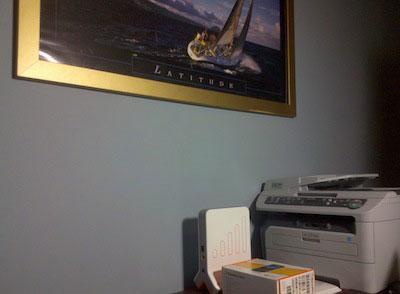
The DROID ships with a 5.0-megapixel camera, and in my testing, image quality was less than desirable. Editing options include white balance settings, an auto-focus, seven color effects, scene modes, three image quality choices, and a macro setting. The video camcorder offers less options, but allows you to record up to 30 seconds for MMS, or longer for a normal video.
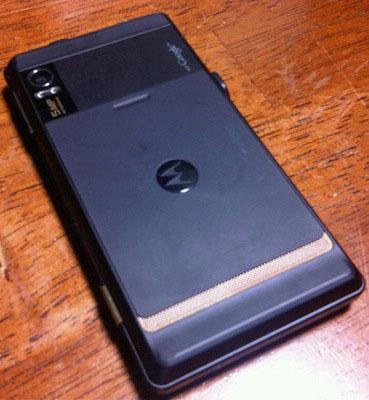
The DROID sports a 1400 mAh battery with an estimated talk time of 6.4 hours, though my testing found that battery life was significantly less than I expected. Due in part to multitasking, a large touchscreen, Android, and 3G connectivity, the battery life declines very quickly. With moderate use encompassing text messaging, calling, e-mail, web browsing, and use of the Android Market, I was able to make it about 9 hours before the device powered down. With little to no use, the device lasted about a day and a half. Despite the tendency of smartphones to have less than desirable battery life, I expect my battery to last throughout the day, and it's a bit challenging to continuously worry about the battery dying throughout the day. As always, battery numbers will vary with the level of usage that they're subjected to between charging cycles, but the device should be fine for the average individual that's near an outlet. For those frequently away from the home or office, make sure to purchase a car charger or an extra battery. You'll need it.
Obviously, the primary purpose of a cell phone is to make calls, and the DROID does it well. Visual Voicemail is offered, though it is Verizon Wireless' solution, which costs $2.99 monthly. The call interface itself is clean and easy to navigate. In the dialer, there are four tabs at the top of the screen: Phone, Call log, Contacts, and Favorites. The device was tested in the Charlotte area, and call quality was fantastic. Callers were able to hear me well, and call quality was strong on my end. When I placed the device on my shoulder (thanks to carrying various bags), call quality was equally good, with myself and my other party reporting favorable results. Additionally, when visiting a known Verizon dead spot, I found calls to sound reasonably clear, though there was some slight fading every now and then. When testing the speakerphone in a loud department store, I was able to hear my callers without a problem, though they reported that it was challenging to hear me. I successfully paired my Plantronics Voyager Pro Bluetooth headset to the device without a problem, and callers were pleased with the clarity.
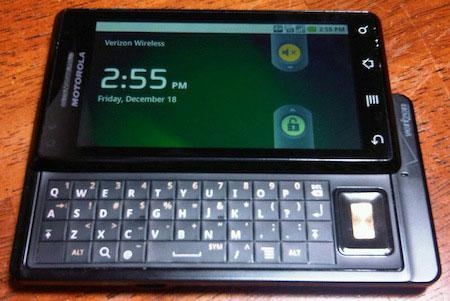
The DROID is an EVDO Rev. A device, meaning that browsing speeds were quite fast. The full CNN webpage loaded in about 17 seconds, and the PhoneDog homepage loaded in 31 seconds. Other data-intensive tasks such as the Android Market and other installed applications performed very well throughout the testing. Users can view web pages in portrait or landscape orientation, though pinch-to-zoom functionality isn't supported. The browser supports HTML5.
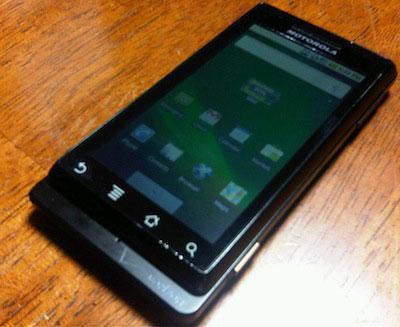
Sure, the DROID has some shortcomings. That being said, it's a phenomenal media device, and is a great addition to Verizon's smartphone lineup. Battery life leaves a lot to be desired, but the 3.7-inch display, Android 2.0 software, and strong design more than make up for it. Be sure to check it out in the store prior to purchase, as the design and operating system will be a love or hate thing.